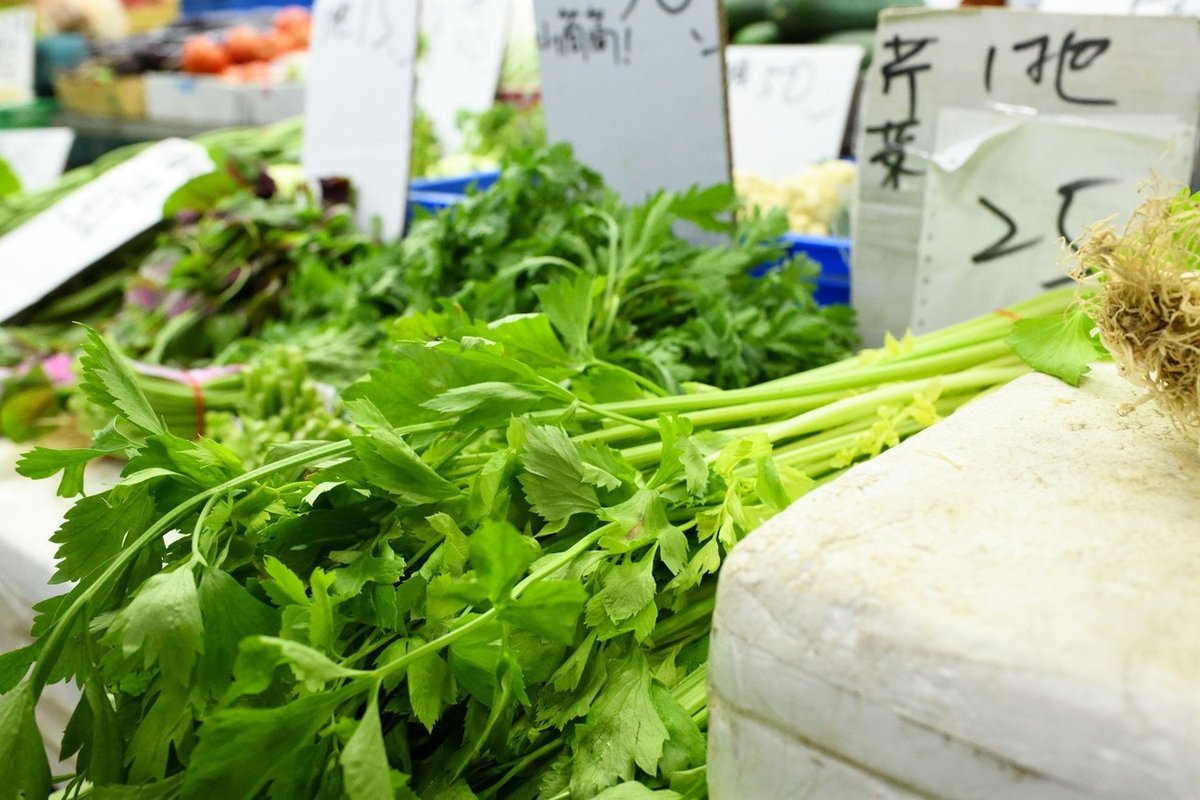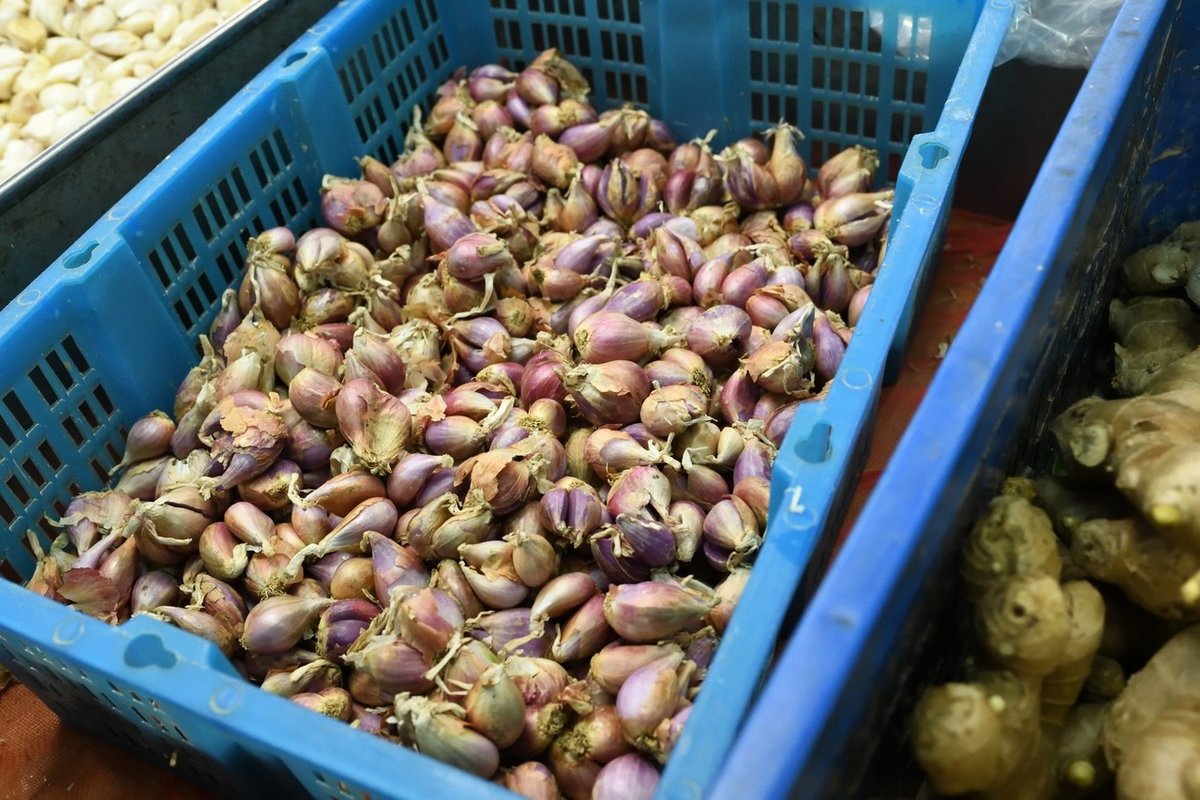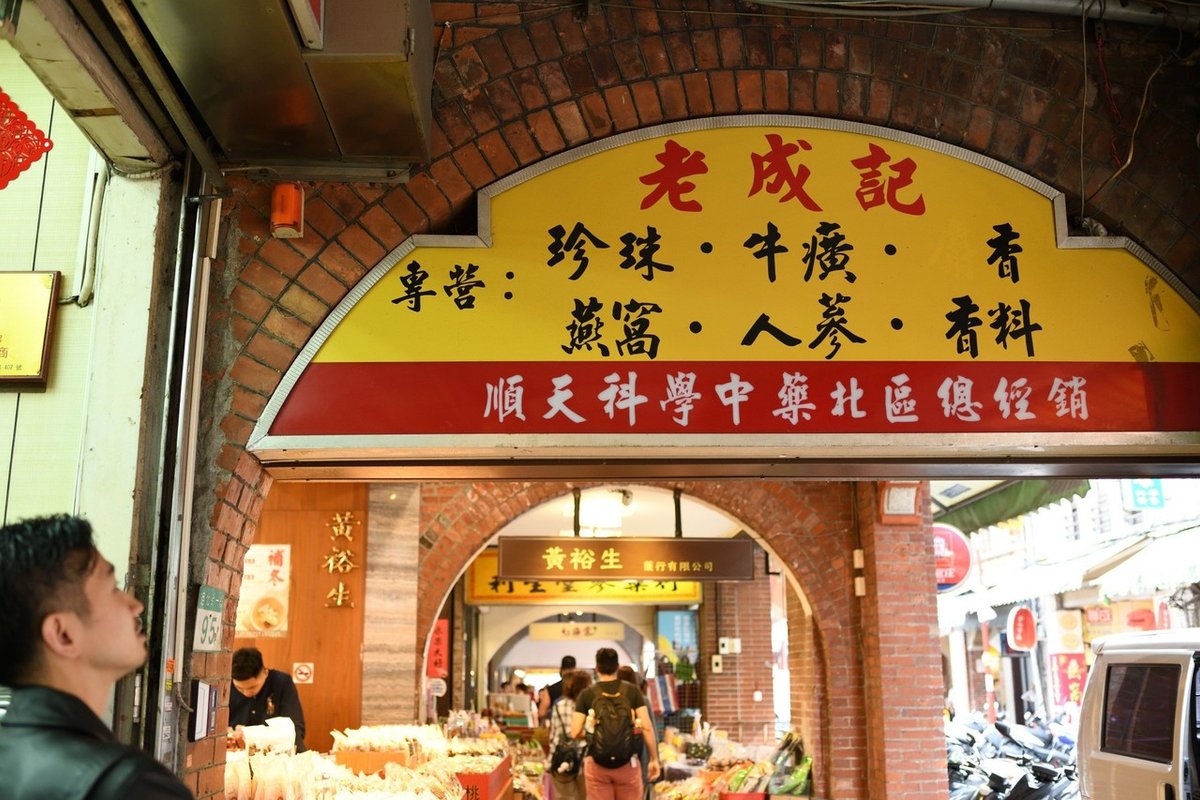
Interview of Taipei Logy Chef Tahara (2)
Don’t rely on the power of the ingredients
We visited a fresh food market near Taipei Songshan Airport. Vegetables, fruit, fish and meat are lined up for sale.


Tahara: No matter when I come they always everything regardless of the season; a wide variety of ingredients. For about a year they’ve had bamboo shoots this size (big) without fail. There is a slight change in the variety of goods depending on the season, but they always have these big bamboo shoots. Although I think there might be a difference in type depending on the season. In the summer they have a very sweet flavor, almost like sweet corn.
SAJI: Previously you’ve said that it’s difficult to present the sense of a particular season in a dish. I think I understand a little what you mean.
Tahara: Also, Taiwanese citrus, like tangerine, orange, or grapefruit, doesn’t have any acidity. Especially tangerine and pomelo. Pomelo is not acidic or bitter, only sweet. This is a Taiwanese bitter gourd. It’s (small and) cute so I want to use it, but it’s very bitter.



In the vegetable section they have the usual ingredients available in Japan, as well as things unique to Taiwan. The flavors overall tend to be milder, herbs are also different than those in Japan, and the shallots have a slight garlicky flavor, according to Chef Tahara.

(Pic) Water caltrops (lingjiao) are available in autumn and winter. In Taiwan they are boiled like chestnuts and eaten, although according to Chef Tahara “They’re cute, but they have no flavor.”

(Pic) Chef Tahara was searching for stem lettuce on this day. They have a clearly established flavor like the core of lettuce. In the beginning of the season they are still thin.

(Pic) The fish area with a large selection for sale. There are also many imports from Japan available. Tilefish and blackthroat seaperch are expensive here as well.

“These are Taiwanese crabs and blue crabs. They have less meat and more crab fat. The liver of the abalone has no flavor. Probably there’s no seaweed with any flavor. The squid tastes the same as in Japan, prawns are on the hard side. The spiny lobster is delicious.” (Chef Tahara)
SAJI: How do you procure your fish?
Tahara: We get all of our fish from the same fish shop. Initially I tried fish from a variety of different vendors, some places would freeze the fish right away and we couldn’t get it fresh, or wouldn’t sell to us if the order was too small. Basically you can’t return an order, and if you don’t thoroughly research the market price they might try to sell it to you at a high markup.
SAJI: So you mean you tried different places and found one that would deal with your order properly.
Tahara: That’s right.
SAJI: In Japan I often hear that you get introduced to a place by a colleague.
Tahara: They do that here in Taiwan too. However they may do things one way for your chef acquaintance, but not the same way for a person who is new. You have to go out and find the best one by yourself. Vendors are organized into small specialty categories, and there are hundreds of shops on the list, but the places that get used the most are pretty much decided. At the market you can see how much the ingredients you want are in circulation, and how much they typically cost.

Next we headed to Dihua Street located in the heart of west Taipei. Dried foods, spices, Chinese herbs, general goods shops, and cafes are located here.

Here Chef Tahara researches the price of various Chinese ingredients such as shark fin, dried abalone, dried sea cucumber etc.


There are numerous Chinese herbal ingredients shops. In Taiwan there is a tradition of eating medicinal soup steamed in a bottle on New Year’s and other celebrations. Each family has their own unique recipe, he says.


(Pic) This is a garlic and ginger specialty shop. “They have ginger which has been aged for 1, 2, or 3 years, and the older is it the spicier it gets. They also have a young ginger that is available year round.” (Chef Tahara)
SAJI: How do you plan to use these Taiwanese ingredients?
Tahara: When I use Taiwanese flavors I mix them with Japanese ingredients to make the flavor taste like Japan.
SAJI: Like Japan?
Tahara: I don’t think “Taiwanese French” fits well for me. I’d like to bring in Japanese cooking to make a clean finish for the food. Because I haven’t seen much Taiwanese food which has Japanese flavoring before, nor have I ever eaten it. Like putting bonito flakes in a stock which was made from chicken and zha cai for example. Starting with that flavor base, I add Japanese and Taiwanese (flavors). That’s why the savory egg custard (Logy’s signature dish) is Japanese mixed with a Taiwanese style consommé soup. In order to establish it as a signature dish, we only use ingredients in it which can be found anywhere in the world. It’s a very simple dish. But we changed it just a little…put dried squid in the consommé, mix a vinaigrette into the crab salad, put wolfberry in it. If you remove the wolfberry and dried squid, it’s possible in Europe too. We make it Taiwan-style with just those two ingredients. I think it’s a good balance. Not too Taiwanese, not strongly Japanese, could also be made in Europe, but no else one makes it.
SAJI: Why is it “a flavor no one else makes?”
Tahara: Um, well, they just don’t make it. It’s because I live here after all, you know? That’s all I think. It’s what I want to make, but it’s pretty difficult. If you rely too much on the ingredients you just wind up making something that can only be made here. Using Taiwanese ingredients to represent Taiwan is very easy, but using ingredients which can be found anywhere, potatoes, cabbage, beets, or celery root for example. I want to use ingredients which are available anywhere to make something that is Taiwanese, and finished with a Japanese touch.

Going to a textiles shop on Dihua Street. The first floor has groceries and restaurants; not obvious at first glance, there is a textiles shop at the top accessible from outside.

Chef Tahara looks for cloth to use for table napkins. He couldn’t find a style of uniform shirt from the ones available, so he designed one and ordered it, he said. After that we stop at the general goods shop and check furniture. Although they’ve been open for one year “I’m not satisfied at all”; he says he wants to slowly change the equipment, etc.
→Continued in “Perspectives Gained in Taiwan”

